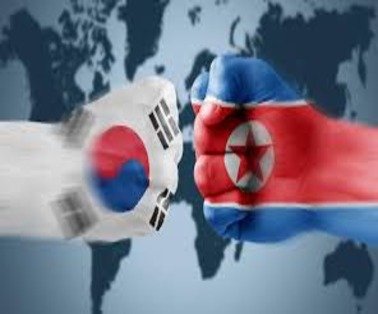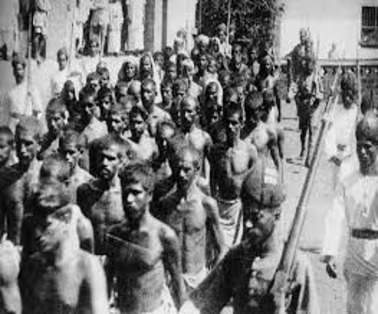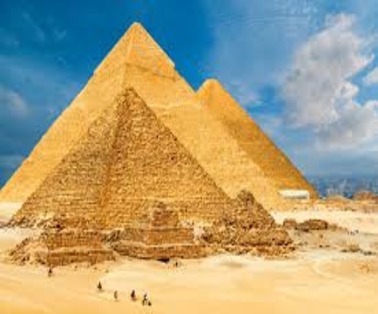The ongoing Korean Peninsula Conflict remains one of the most volatile geopolitical issues in the world today. North Korea accused the US of escalating the tensions in Korean Peninsula to the brink of nuclear war after Washington flew nuclear-capable B-52 bombers in a joint military drill with South Korea
Rising Tensions on the Korean Peninsula
- The exercises are a trigger for driving the situation on the Korean peninsula conflict to the point of explosion.
- The reckless military confrontational hysteria of the US and its followers against the DPRK is driving the situation on the Korean peninsula to an irreversible catastrophe … to the brink of a nuclear war, said North Korea
- This commentary can be seen as North Korea’s show of force. The country itself has been conducting intercontinental ballistic missile launches and large-scale military parades. It also recently tested its new nuclear-capable underwater drone.
- The North Korean analyst said that the nation will respond to the military drills with “offensive action.”
History Of The Korean Peninsula Conflict

The K0rean War
- On 25 June 1920, a full-fledged war broke out when one lakh North Korean soldiers crossed the DMZ and attacked South Korea.
- The North Korean forces advanced rapidly and within 3 days (28 June) Seoul fell.
- Meanwhile on 27 June 1950, United Nations convened and passed a resolution 83 which authorised the member states to provide military assistance to South Korea.
- On the same day, US President Harry Truman authorised the use of US force to liberate South Korea.
- The war was now fought between United Nations forces {which were predominantly American} and North Korea’s Korean People’s Army (KPA).
- The decisive battle in this war was Battle of Inchon (1950), which was an amphibious assault at the port of Inchon.
- The battle resulted in a decisive victory and strategic reversal in favor of the United Nations.
- The operation led to the recapture of the South Korean capital of Seoul two weeks later.
- The Korean War was settled into a stalemate around the 38th parallel.
- Since neither side was unable to gain advantage, a Korean Armistice Agreementwas reached on July 27, 1953.
- The agreement resulted in a ceasefire, the exchange of prisoners of war (POWs), and the establishment of a Demilitarized Zone (DMZ).
- Technically, the Korea War is never over because no official peace treaty was ever signed.
Aftermath Of The Korean War
- In North Korea, the Communist dictator Kim Il Sung established collective farms, developed heavy industry, and built up the country’s military power.
- At Kim’s death in 1994, his son Kim Jong Il ascended to power. Under Kim Jong Il’s rule, Communist North Korea developed nuclear weapons. Although the country is well-armed, it has serious economic problems.
- It continues to struggle with shortages of energy and food.
- On the other hand, South Korea prospered, thanks to massive aid from the United States and other countries.
- Political differences keep the two Koreas apart, despite periodic discussions of reuniting the country.
- In 1997, however, South Korea joined several other countries in sending food to North Korea. Although talks continue, the Communist North Koreans remain firmly opposed to reunification.
India’s Role in the Korean Peninsula Conflict
- India under Nehru was actively involved in negotiating peace in the Korean peninsula by engaging all the major stakeholders – US, USSR and China.
- In late 1952, the Indian resolution on Korea was adopted at the UN with unanimous non-Soviet support.
- But India rightly recognized any deal without the Soviets will fail and immediately flung into action to get them on board, which happened in 1953.
- Ultimately, despite the rough international political climate, India succeeded in building consensus – which precipitated in the “Armistice Agreement”.
- One of the follow-up actions to the Armistice Agreement was the establishment of a Neutral Nations Repatriation Commission (NNRC).
- NNRC was to decide on the fate of over 20,000 prisoners of war from both sides and India was chosen as the Chair of the NNRC.
- NNRC also had “Poland and Czechoslovakia” representing the Communist bloc, and “Sweden and Switzerland” represented the Western world.
- A UN Command led by an Englishman and a Custodian Force from India (headed by Lt. Gen Thimayya) was also deployed in the inter-Korean border.
- NNRC’s tenure ended in early 1954, and the Indian forces were praised internationally for executing the tough stabilising operations successfully.
- At the end of its work, the NNRC was left with over 80 prisoners of war who didn’t want to go to either of the Koreas.
- As an interim arrangement, Nehru decided to grant them abode in India until the UN directive on their request is pronounced
To Download Monthly Current Affairs PDF Click here
Get Inspiration from CLAT 2025 Topper
Click here to get a free demo
Everything About CLAT 2025
FAQs
What is the current situation on the Korean Peninsula?
The Korean Peninsula remains tense, with ongoing military drills by the US and South Korea provoking North Korea. The region faces the risk of nuclear escalation, with North Korea continuing its missile tests and military posturing.
What is the history of the Korean War?
The Korean War began in 1950 when North Korean forces invaded South Korea. The conflict ended in 1953 with an armistice, but no formal peace treaty was signed, leaving the two Koreas technically still at war.
What is the Korean Demilitarized Zone (DMZ)?
The DMZ is a 250-km long buffer zone that separates North and South Korea. Established after the Korean War armistice, it remains one of the most heavily militarized areas in the world.
Has North Korea developed nuclear weapons?
Yes, North Korea has developed nuclear weapons and conducted several missile and nuclear tests. The country’s nuclear program is a major source of tension with the US, South Korea, and the international community.
What is India’s role in the Korean Peninsula conflict?
India played a key role in peace negotiations during the Korean War, helping mediate the 1953 armistice. India also chaired the Neutral Nations Repatriation Commission (NNRC), which oversaw the exchange of prisoners of war.



